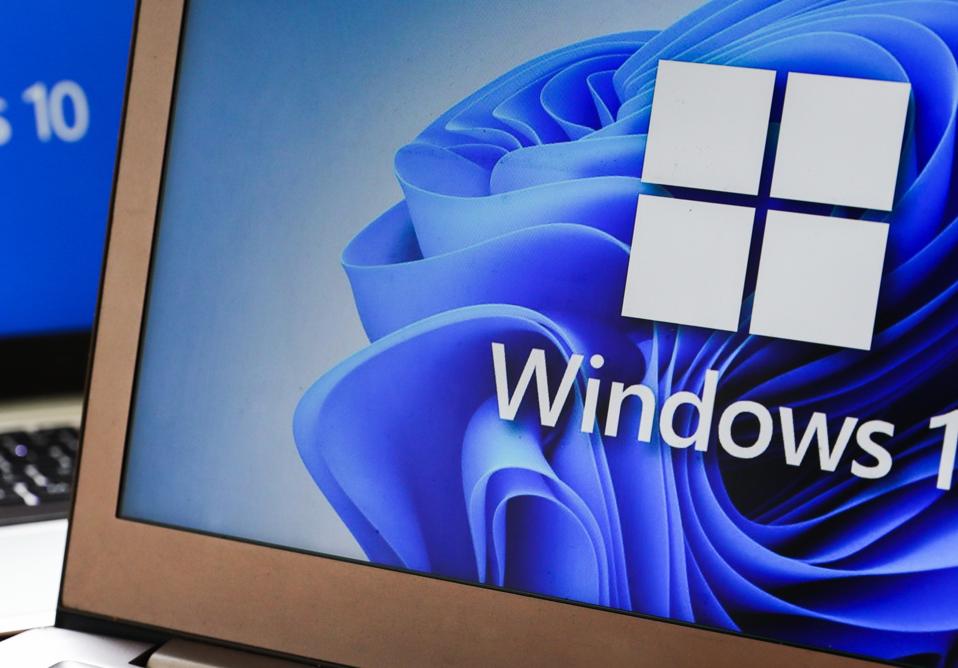New updates now here.
Republished on July 25 with analysis of Microsoft’s new update claims.
It’s now here. Microsoft’s controversial u-turn on Windows 10’s end of life has morphed into a free update offer, whereby the problem for 700 million users is postponed.
Windows 11 is the faster, better, safer option Microsoft wants the 700 million Windows 10 holdouts to move to. But says “we understand that moving to a new PC can take time, and we’re here to support you throughout the process.”
In a Tuesday blogpost, Microsoft says “starting today, individuals will begin to see an enrollment wizard through notifications and in Settings, making it simple to select the best option for you and enroll in ESU directly from your personal Windows 10 PC.”
While the u-turn to the free 12-month security update extension has been reported as including a catch, that just means you need to pick one of Microsoft’s options. Using OneDrive for example or some of your reward points. It’s essentially a free offer.
In other news, Microsoft is also pushing the AI benefits of new Copilot PCs hard, touting a range of new features, as well as the latest push for users to switch Chrome for Edge. “Microsoft Edge is the only browser built for Windows, offering the most seamless PC browsing experience with AI-powered tools, productivity features, and built-in performance and security features that help you browse quickly and safely.”
Meantime, for those already on Windows 11, the company is heralding its latest update as “the most reliable Windows yet.” Compared to Windows 10 22H2,” it says that Windows 11 24H2 “failure rates for unexpected restarts have dropped by 24%. These improvements reflect deep collaboration across engineering, design, and user research teams and a commitment to making Windows more resilient for everyone.”
Windows Latest suggests this might be a “tall claim,”given that “Windows 11 24H2 has been a mess for many of us. It caused Blue Screen of Death errors, slow performance, cursor issues, drops in FPS, and broke drivers. But Microsoft says it was still more stable than the previous releases. As per the tech giant, Windows 11 24H2 had fewer failure rates and unexpected restarts. The numbers dropped by 24%.”
The other thing that has now started is “a new major change for the Blue screen of Death’s color. Well, it’s dark and dull, and Microsoft feels that it’s the best way to inform you about a system crash rather than the original blue color screen.”
This generated plenty of headlines when it was first announced, bringing to an end the era of BYOD fears as a dreaded nightmare for Windows users. This is now simpler and more streamlined, and also theoretically shortens the restore time for users.
“The company claims to have shortened the boot time after a crash from 40 to 2 seconds,” Windows Latest says. “We wonder if those 2 seconds are enough to read the stop code, especially for those who don’t have experience with Event Viewer or reading logs. However, you’ll not see the Blue colour in the foreseeable future. Another intersection point to note is that they kept the color that starts with a ‘B’.”
With these new changes in the interest of reliability, Microsoft will likely hope that Windows 10 users decide to make the switch even as the ESU Wizard rolls out to devices. The disaster scenario would be repeating all this again next year.
And for those not yet using Windows 11, there’s also the new PC-to-PC migration tool making an appearance, per Windows Latest. The new migration feature “coming to Windows 11 and 10 was expected, but it’s the first time Microsoft has shared details.”
Apparently this seems to works fine for the Windows 10 to Windows 11 migration, which is the real reason this matters of course. Anything that can be done to simplify the transition from Windows 10 to newer PCs has to be welcomed as removing one of the hurdles stopping millions of users acting.
“With the new migration tool, Windows can pull your folders and many personal settings over the home network. Microsoft warns that Apps and passwords don’t get copied, but that’s okay as long as you’ve everything synced to OneDrive. You can always restore Store apps from the library, and passwords from the Microsoft account.”
Meanwhile, Neowin has just reported another twist in the Windows 10 upgrade saga. After the website “noticed that Microsoft had begun releasing the KB5001716 update, one which it periodically releases to nudge users to jump from a previous Windows version to a newer one,” it seems that it may have still “triggered a Windows 11 feature update, even on systems that do not officially support the upgrade.”
Neowin says that “according to a report from German news blog Borncity, Microsoft seemingly offered Windows 11 on a PC that does not meet the requirements. A reader of the blog notes that their system had TPM disabled in order to avoid any forced in-place upgrade, and despite that, their Windows 10 PC got the update offer to Windows 11.”
We have seen plenty such reports before, of course, as well as a range of workarounds that required varying levels of expertise and bravery and which were liable to Windows updates that stopped them working. What we have not seen in any lasting sense is the relaxing of the TPM hurdle for a PC to be eligible to upgrade.
No confirmation of this as yet or what it might mean. And so whatever you do — extending updates or taking the still free Windows 11 upgrade, just make sure you do something before October when the usual Windows 10 updates end.
Source link

